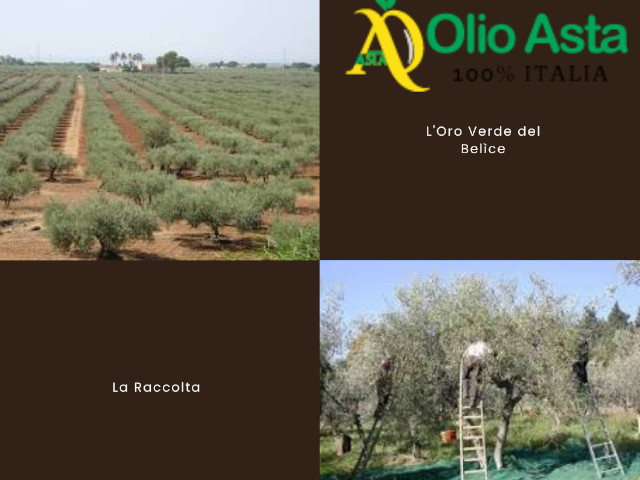The Green Gold of Belìce: The Rite of the Olive Harvest in the Sicilian Valley

The Belìce Valley, in the heart of western Sicily, is a land with an ancient agricultural tradition, renowned worldwide for the production of one of the finest extra virgin olive oils: that obtained from the Nocellara del Belìce olive, a native cultivar that boasts the prestigious D.O.P. (Protected Designation of Origin) certification.
Every year, between late autumn and early winter—typically between October, November, and December—the valley comes alive for the crucial moment of the olive oil campaign: the olive harvest. This is not just a chore, but a true ritual that marks the rhythms of nature and the community.
The Optimal Timing and the Importance of Timing
The exact timing of the harvest is crucial and depends on several factors, including weather conditions and, above all, the fruit's degree of ripeness (veraison). In the Belice Valley, the primary objective is to harvest the olives at the "right veraison," when the fruit is still predominantly green with the first purple hues.
This choice is not accidental: early-harvested olives, although in smaller quantities than riper ones, guarantee an oil with a higher polyphenolic (natural antioxidant) content, a more intense, fruity flavor, and distinctive bitter and spicy notes, typical of Nocellara. Timing is crucial: the olives must be pressed within a few hours (often within 12-24 hours) of harvest to fully preserve their organoleptic qualities and very low acidity, the cornerstones of the quality of Belice oil.
Harvest Techniques: From Tradition to Innovation
To preserve the integrity of the fruit and the health of the tree, techniques that minimize mechanical stress are preferred in the Belice Valley:
Hand-PickingThis is the traditional method par excellence, often used for Nocellara olives, including those intended for table consumption. It involves picking the olives directly from the tree by hand. Although it is the most expensive and slowest method, it ensures that the olives reach the mill completely intact and free from damage.
The Use of Olive Harvesters and ShakersTo optimize processing times, many producers use mechanical harvesters (small vibrating rakes) or shakers attached to the trunk, which cause the olives to fall onto nets or sheets spread under the tree. These techniques are used with caution to avoid damaging the tree and are considered a good compromise between speed and quality.
Once on the ground on the sheets, the olives are quickly selected and placed in perforated crates or ventilated bins to prevent overheating or stagnation from compromising their quality before milling.
The Journey to the Mill
The care with which the olives are harvested is completed with processing in the mill. The Valle del Belìce D.O.P. regulations require cold extraction, a process that, although it slightly reduces the oil yield, is essential for preserving all the aromas and nutritional properties, giving the consumer an oil that is a true expression of the territory and the passion of those who, each year, renew their ancient pact with the land.
The olive harvest in the Valle del Belìce is not only the beginning of oil production, but also the celebration of a cultural and agricultural heritage that continues to make Sicily a global benchmark for excellent extra virgin olive oil.
OlioAsta.it
Data:29/10/2025 10.01
In
CultureOlive Harvest Castelvetrano Oil Belice Oil Asta Oil  The Belìce Valley, in the heart of western Sicily, is a land with an ancient agricultural tradition, renowned worldwide for the production of one of the finest extra virgin olive oils: that obtained from the Nocellara del Belìce olive, a native cultivar that boasts the prestigious D.O.P. (Protected Designation of Origin) certification.
The Belìce Valley, in the heart of western Sicily, is a land with an ancient agricultural tradition, renowned worldwide for the production of one of the finest extra virgin olive oils: that obtained from the Nocellara del Belìce olive, a native cultivar that boasts the prestigious D.O.P. (Protected Designation of Origin) certification.